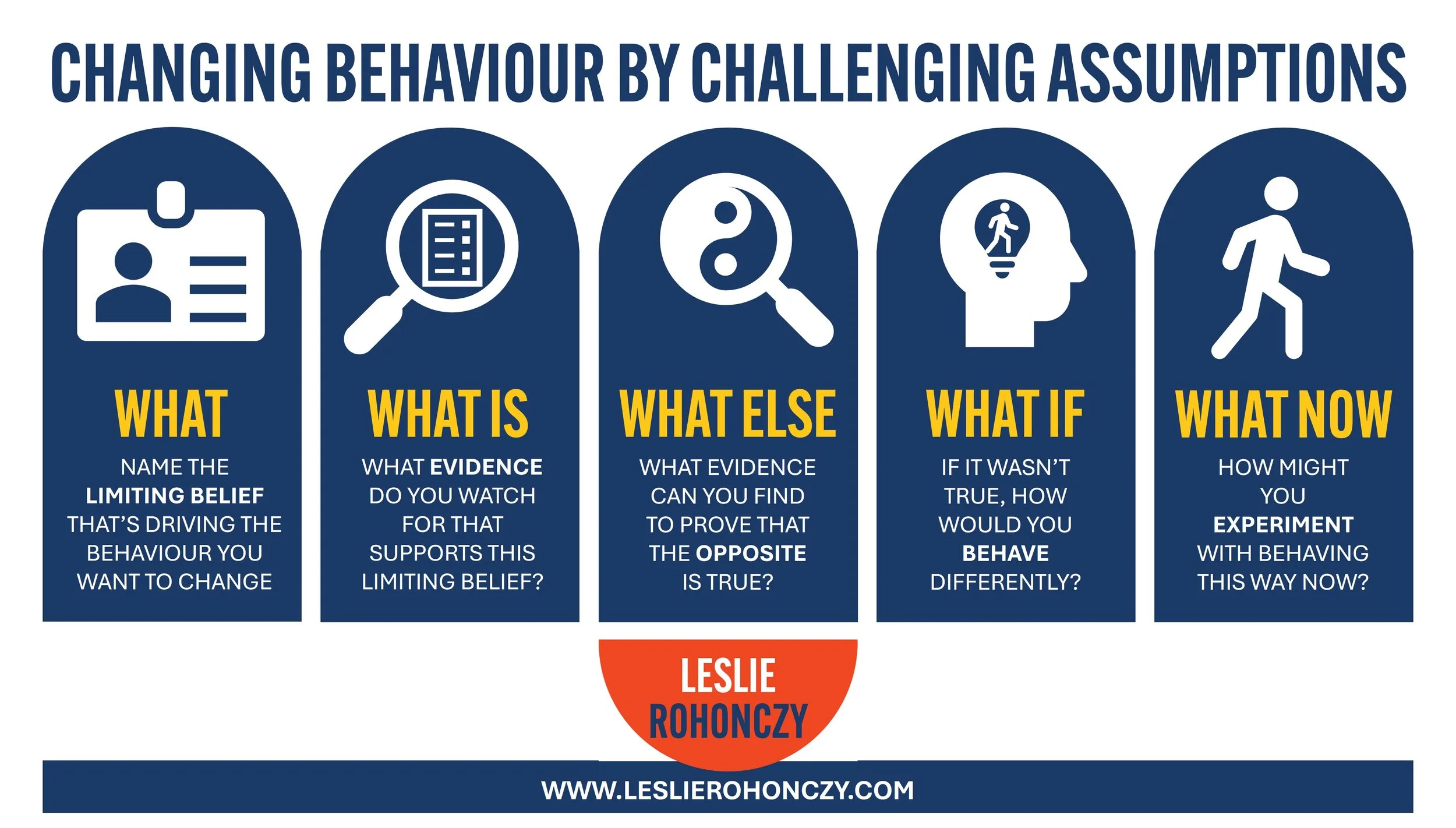by Leslie Rohonczy, Executive Coach, IMC, PCC | ©2024 | www.leslierohonczy.com
In the realm of leadership, tough conversations are inevitable. And no matter how high your level of seniority is, the challenging emotions we might experience during these interactions can be uncomfortable. Whether delivering critical feedback, discussing performance issues, or, perhaps most challenging of all, letting someone go, these conversations are an integral part of your leadership accountability.
As an executive coach, I've helped many leaders navigate the emotional and professional complexities in preparing for challenging conversations. Here are some of the challenges I’ve seen senior leaders wrestle with, and some of the best practices to consider when preparing for tough conversations.
THE CHALLENGES
Emotional Toll | The emotional burden of tough conversations can be significant. Leaders often feel a sense of personal responsibility and empathy towards their employees, making the act of delivering bad news particularly stressful. This emotional toll on the leader can lead to procrastination, avoidance, and increased anxiety. For example, you may hesitate to let an underperforming team member go because you know the individual is going through personal hardships, such as a family illness. Your empathy can make it difficult to separate your personal feelings from your professional responsibilities.
Maintaining Professionalism | Balancing empathy with professionalism is crucial. Leaders must convey the necessary messages without letting their emotions cloud their judgment or delivery. Striking this balance is often easier said than done, especially when the conversation has significant consequences for the employee. For example, during a performance review, you may feel tempted to downplay negative feedback to avoid hurting the employee’s feelings. However, this could lead to misunderstandings about the seriousness of the issues and hinder the employee's growth.
Legal and Ethical Considerations | Navigating the legal and ethical implications of difficult conversations, particularly terminations, adds another layer of complexity to an already-challenging discussion. Ensuring the conversation is conducted fairly, respectfully, and in compliance with legal standards is essential to avoid potential repercussions. For example, when terminating an employee, ensure that the specific reasons for termination are well-documented and legally sound to prevent claims of wrongful dismissal or discrimination. This requires careful preparation and adherence to HR policies and legal guidelines.
BEST PRACTICES & ‘TRY-ITS’
Preparation is Key | Thorough preparation is vital for any tough conversation. Leaders should clearly outline the key points they need to convey and reflect on likely potential reactions from the employee. Practicing the conversation beforehand can help in articulating thoughts more clearly and confidently. Try-it: Before a meeting to discuss a significant performance issue, prepare by reviewing the employee’s performance records, noting specific incidents that illustrate the problem, and rehearse how to present this information in a clear, constructive, and respectful way.
Be Direct but Compassionate | Honesty is crucial, but it must be balanced with compassion. Be direct about the issues at hand, but also express empathy and understanding. This approach helps to respect and maintain the person’s dignity while clearly communicating the necessary message. Clear is kind. Try-it: When informing an employee about their termination, you could say, “This decision was incredibly difficult, and I understand it’s a lot to take in. We’ve seen a consistent pattern in performance that hasn’t improved despite our efforts, and we need to make this change. I’m here to support you through this transition.”
Create a Safe Environment | Conduct the conversation in a private, comfortable setting where the employee feels safe. This environment encourages open communication and helps manage the emotional intensity of the situation. Ensure there are no interruptions and that the focus remains on the conversation topic. Try-it: Schedule the conversation in a private office or a neutral, quiet space where you won’t be interrupted. This setting helps the employee feel respected and ensures the conversation remains confidential.
Listen Actively | Active listening is a critical skill during tough conversations. Allow the employee to express their thoughts and feelings without interruption. Acknowledge their emotions and show that you value their perspective. This approach fosters a sense of respect and understanding, even in difficult circumstances. Try-it: If an employee reacts emotionally to feedback, you might respond, “I hear that you’re feeling frustrated and upset. Your work is important to us, and I want to understand your perspective. Let’s talk more about what’s been challenging for you.”
Provide Support and Resources | When letting someone go, offer support and resources to help them through this transition. Support could include outplacement services, references, or guidance on the next steps. Demonstrating your commitment to their well-being, especially through their departure, conveys that you care about them, and that the company is committed to supporting them. Try-it: After informing an employee of their termination, you could offer, “We’ve arranged for outplacement services to help you find your next opportunity. They’ll be really helpful in helping you navigate the next steps to finding the role that’s right for you.”
Follow Up | After the conversation, follow up with the employee to ensure they are coping well. This could be a brief check-in or offering additional support if needed. For remaining team members, communicate about the change to the team as transparently as possible – while respecting the departing employee’s confidentiality – and address any concerns they might have. This will help you to monitor morale and trust within the team, as forced departures tend to create fear and anxiety in remaining employees. Try-it: A few days after a tough conversation with your employee, reach out to them with an email or call, saying, “I wanted to check in and see how you’re doing. If you need any additional support, please let me know.” And when an employee has been terminated, you can say to the remaining employees, “I want to address the recent changes and reassure you that we are here to support each of you through this transition. I won’t communicate the specific reasons for the departure, because I’m respecting their privacy, but I invite your questions and concerns.”
As a leader, tough conversations are part of your role. Embrace challenging conversations as opportunities to foster growth and resilience within your team and organization and as a leadership development opportunity. These experiences will not only help you strengthen your leadership, but they can help you cultivate a culture of candor and accountability in your organization.



